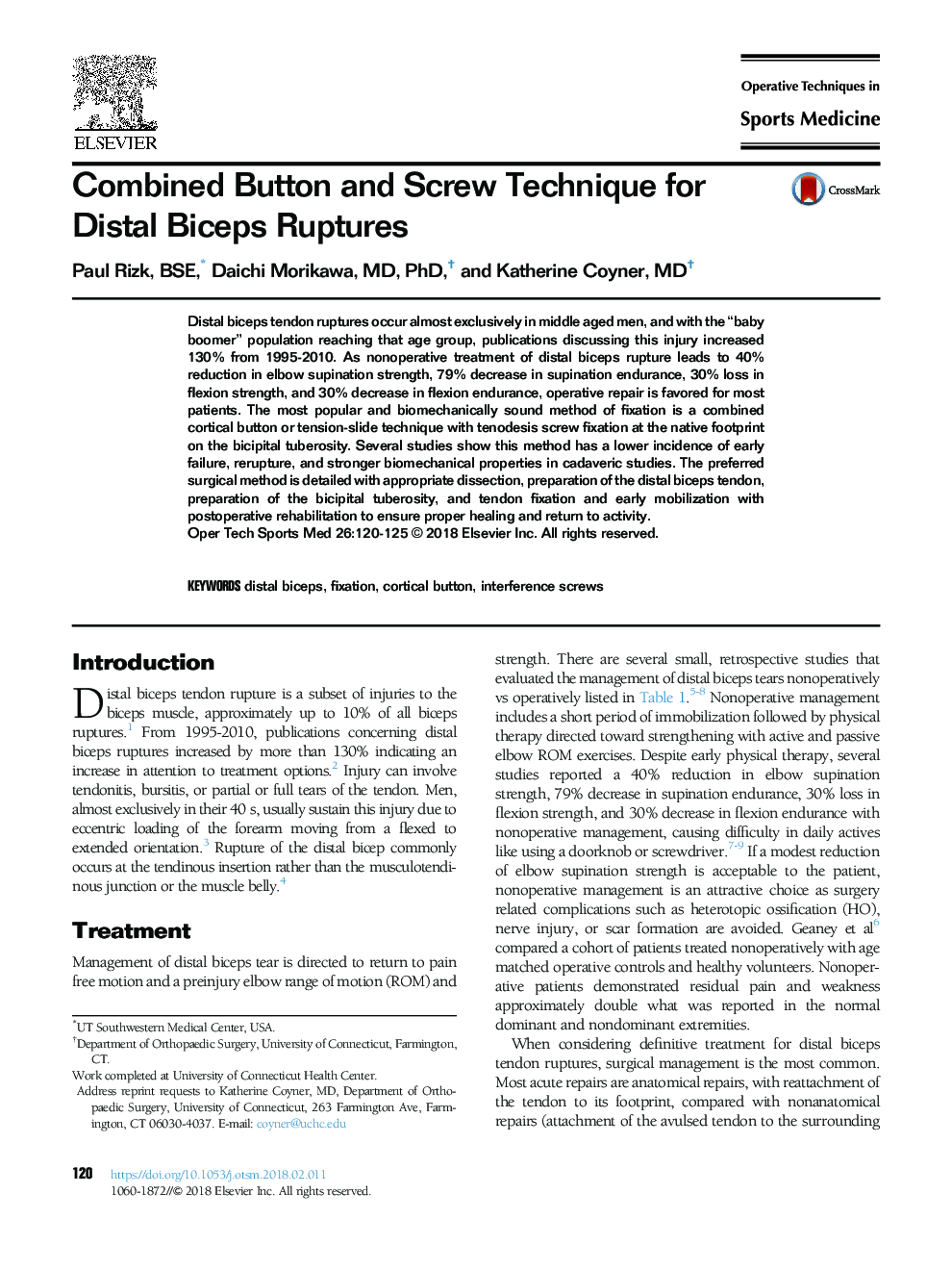| Article ID | Journal | Published Year | Pages | File Type |
|---|---|---|---|---|
| 8801844 | Operative Techniques in Sports Medicine | 2018 | 6 Pages |
Abstract
Distal biceps tendon ruptures occur almost exclusively in middle aged men, and with the “baby boomer” population reaching that age group, publications discussing this injury increased 130% from 1995-2010. As nonoperative treatment of distal biceps rupture leads to 40% reduction in elbow supination strength, 79% decrease in supination endurance, 30% loss in flexion strength, and 30% decrease in flexion endurance, operative repair is favored for most patients. The most popular and biomechanically sound method of fixation is a combined cortical button or tension-slide technique with tenodesis screw fixation at the native footprint on the bicipital tuberosity. Several studies show this method has a lower incidence of early failure, rerupture, and stronger biomechanical properties in cadaveric studies. The preferred surgical method is detailed with appropriate dissection, preparation of the distal biceps tendon, preparation of the bicipital tuberosity, and tendon fixation and early mobilization with postoperative rehabilitation to ensure proper healing and return to activity.
Related Topics
Health Sciences
Medicine and Dentistry
Orthopedics, Sports Medicine and Rehabilitation
Authors
Paul BSE, Daichi MD, PhD, Katherine MD,
